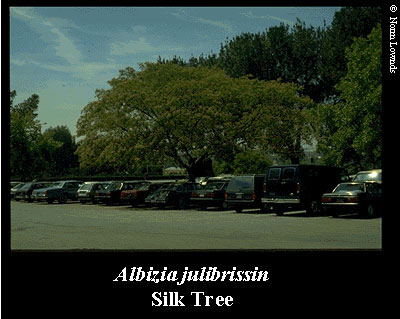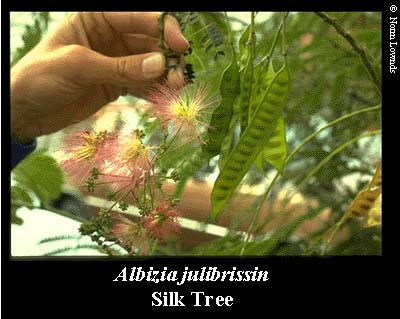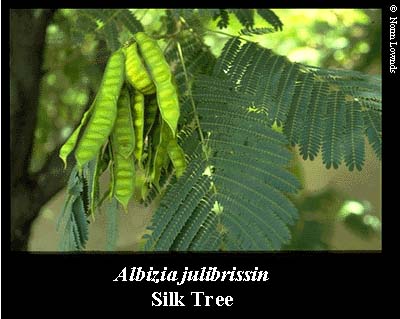Silk Tree
Albizia Julibrissin

The Mimosa is a member of the Fabaceae family. It has a vase shaped habit and grows from 20 to 35 feet tall. This tree thrives in this region, it has been rated for regions 6 to 9, although extended periods below -5 F will damage the tree. The long bipinnately compound leaves along with the thread like pink flowers give it a very soft texture in leaf.
Being a member of the Fabaceae family the tree produces pods that are 5 to 7 inches long, they are smooth and show in September through October. Albizia is a fast growing tree that is readily transplanted. Root cuttings are often effective for propagation. This tree will withstand extended drought and it also tolerates high pH and soil salinity. Maximum flowering is accomplished when in full sun.
I have seen this tree planted widely across the NMSU campus. I think it is very attractive, the soft leaves lent to a tropical effect and the vase shape provides for ample shade, the crown is high enough to provide walking clearance if it is placed near a walkway. There may be a few things to consider before selecting this tree for your own use. The sensitivity to cold weather may present problems immediately or well after the plant is established. The pods and seeds could cause yard maintenance hassles. This tree has also had problems with insects and disease. There is a vascular wilt disease that can kill the tree all the way down to the ground, then a mass of unsightly suckers will grow from there. The web worm can also devastate the tree.
-Micah Stege Agro / Hort 100, Spring 1999

